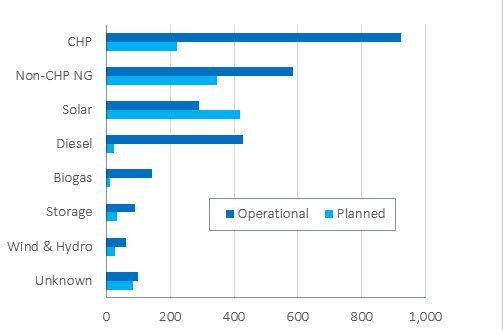Combined heat and power (CHP) provides year-round baseload energy in microgrids — something renewable resources don’t do. Yet solar PV now overshadows CHP in planned microgrid projects. according to a new microgrid database by ICF.
“We see a lot of installed CHP systems in operating microgrids. it’s the largest technology in terms of capacity.“ said David Jones. ICF’s manager and analyst for CHP DER microgrid markets and applications. “We were surprised to not see as much CHP in the planned microgrids.“
The reason? Microgrid developers are moving away from fossil fuels. Jones said. Instead. they’re installing solar and energy storage. Or others choose simpler. power-only natural gas generation. as opposed to CHP.
Cost might be a factor. said Jones. It’s possible those who are developing microgrid projects think CHP is too expensive to incorporate.
CHP is a resource that ICF carefully follows — it has been updating the Department of Energy’s CHP Installation Database for over a decade.
The shift to solar is occuring despite the efficiency CHP affords. Used for more than a century. CHP uses the heat byproduct created during the generation of electricity. Its used to warm buildings. create cooling. produce steam or serve other processes that require thermal energy. In contrast. conventional generators waste the byproduct. letting it waft into the air or water.
In all. the database identifies about 400 MW of planned solar PV. compared with about 200 MW of CHP for microgrid projects. However. because CHP operates 24 hours a day. it dominates based on operating capacity. Jones noted.
 Iran Energy News Oil, Gas, Petrochemical and Energy Field Specialized Channel
Iran Energy News Oil, Gas, Petrochemical and Energy Field Specialized Channel




